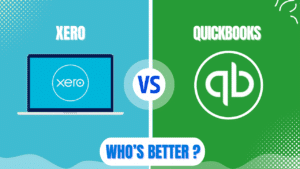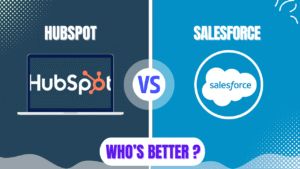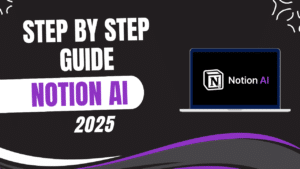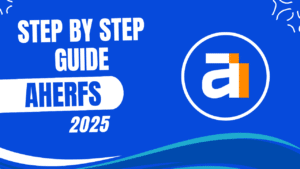I recommend Surfer SEO for content creators and marketers seeking data-driven content optimization with proven results. Surfer SEO delivers exceptional value through its comprehensive content analysis, AI-powered writing assistance, and real-time optimization guidance that has helped websites increase organic traffic by up to 400%. The platform’s intuitive interface, SERP analyzer, and Content Editor make implementing SEO best practices accessible even to non-technical users, though its premium pricing (starting at $59/month) may be prohibitive for individual bloggers or small businesses with limited content needs.
Surfer SEO in 2025
Surfer SEO has evolved into a comprehensive content optimization platform that helps users create highly rankable content based on data-driven insights. The software analyzes top-performing pages for any keyword and provides specific recommendations to improve your content’s search visibility.

Recent updates in 2025 have enhanced Surfer’s capabilities with advanced AI features, improved SERP analysis, and more accurate content scoring. These improvements strengthen its position as a leading solution for content creators seeking to maximize organic traffic.
The platform operates on a tiered pricing model with plans designed for different content needs and team sizes. Surfer offers Essential ($59/month), Advanced ($119/month), and Max ($239/month) plans with increasing features and content credits.
Surfer’s core philosophy centers around correlational SEO—identifying patterns among top-ranking pages and applying those insights to your content. This data-driven approach has made it particularly effective for content teams seeking to improve search performance without relying on guesswork.
Key Features That Drive Results in 2025
Surfer SEO provides several powerful features designed specifically to help users create and optimize content that ranks well in search engines. These tools work together to form a complete content optimization workflow.
The SERP Analyzer examines the top search results for any keyword to identify ranking patterns. This feature analyzes over 500 on-page and off-page factors to determine what successful content has in common for your target keyword.
Content Editor serves as Surfer’s flagship feature, providing real-time optimization guidance as you write. The tool compares your content against top-performing competitors and suggests improvements to keywords, headings, structure, and other elements.
The Keyword Research tool helps identify relevant terms to include in your content. This feature provides data on search volume, keyword difficulty, and related terms to ensure comprehensive topic coverage.
Content Planner generates complete content strategies based on keyword clusters. The tool identifies topically related keywords and creates structured content plans that help establish topical authority in your niche.
| Feature | Function | Benefit |
|---|---|---|
| SERP Analyzer | Analyzes top-ranking pages | Identifies ranking patterns |
| Content Editor | Real-time optimization guidance | Improves content quality |
| Keyword Research | Finds relevant terms | Ensures topic coverage |
| Content Planner | Creates content strategies | Builds topical authority |
| Audit | Evaluates existing content | Identifies improvement opportunities |
Setting Up Your Surfer SEO Workflow
Account creation begins with selecting the appropriate plan for your content needs. The platform offers a 7-day money-back guarantee, allowing you to test its capabilities before committing long-term.
The initial dashboard presents a clean interface with access to all major features. This centralized hub serves as your starting point for all content optimization projects.
Browser extension installation enhances your workflow efficiency. The Chrome extension allows you to access Surfer’s tools directly while browsing search results or working in Google Docs.
Integration setup with writing platforms streamlines content creation. Surfer connects with WordPress, Google Docs, and other popular tools to provide optimization guidance within your preferred writing environment.
Team configuration options allow for collaborative content creation. Adding team members with appropriate permissions ensures everyone involved in content production can access Surfer’s insights.
Step 1: Conducting Keyword Research
Keyword research forms the foundation of effective content optimization. Surfer’s Keyword Research tool helps identify valuable terms that balance search volume with ranking difficulty.

The keyword clustering feature groups semantically related terms together. This organization helps create comprehensive content that covers topics thoroughly rather than focusing on individual keywords.
Search intent analysis ensures your content matches user expectations. Surfer examines the types of content currently ranking to help you align your approach with what search engines consider relevant.
Competitor keyword identification reveals terms driving traffic to similar sites. This intelligence helps uncover valuable keyword opportunities you might otherwise miss.
The keyword difficulty score helps prioritize your targeting strategy. This metric estimates how challenging it will be to rank for specific terms based on the strength of current top results.
| Keyword Research Element | Purpose | Strategic Value |
|---|---|---|
| Search Volume | Traffic potential | Prioritization |
| Keyword Difficulty | Ranking challenge | Resource allocation |
| Search Intent | Content alignment | Relevance signals |
| Related Terms | Topic coverage | Comprehensive content |
| Competitor Usage | Competitive insight | Gap identification |
Step 2: Creating Content Briefs
Content brief creation streamlines the writing process through structured guidance. Surfer’s Content Planner generates comprehensive briefs based on SERP analysis and keyword research.
Topic structure recommendations outline the ideal organization for your content. These suggestions help ensure logical flow and complete topic coverage based on successful competitors.
Required headings identification helps structure content effectively. Surfer analyzes common headings among top results to suggest section topics that should be included.
Keyword recommendations specify primary and secondary terms to include. The platform provides specific keyword suggestions with optimal usage frequencies based on top-performing content.
Question identification helps address user queries directly. Surfer identifies common questions related to your topic that should be answered within your content.
Step 3: Writing Optimized Content
The Content Editor provides real-time optimization guidance as you write. This interactive tool scores your content against top competitors and suggests improvements to increase ranking potential.

Keyword implementation follows natural language principles rather than forced placement. Surfer recommends using terms in context where they make sense rather than awkwardly stuffing keywords.
Content structure optimization ensures proper heading hierarchy and organization. The tool suggests appropriate H1, H2, and H3 headings based on successful content structures.
Word count guidance helps create appropriately comprehensive content. Surfer analyzes the length of top-performing pages to recommend optimal content length for your specific topic.
NLP (Natural Language Processing) terms enhance topical relevance beyond keywords. These semantically related terms help search engines understand your content’s context and relevance.
| Content Element | Optimization Approach | Impact |
|---|---|---|
| Headings | Proper hierarchy and keywords | Structure signals |
| Paragraph Length | Readability optimization | User engagement |
| Keyword Density | Natural implementation | Relevance signals |
| NLP Terms | Contextual inclusion | Semantic relevance |
| Content Length | Comprehensive coverage | Completeness signals |
Step 4: Optimizing Existing Content
Content auditing identifies improvement opportunities in published pages. Surfer’s Audit tool analyzes existing content and provides actionable recommendations to enhance search performance.
Prioritization methodology focuses efforts on high-impact changes. The platform scores potential improvements to help you address the most significant issues first.
Content gap analysis identifies missing topics and keywords. This comparison against top performers reveals content elements you should add to improve competitiveness.
Structural improvements enhance readability and user experience. Recommendations for heading structure, paragraph length, and content organization help improve engagement metrics.
Implementation tracking monitors optimization progress. The platform shows your content score improving in real-time as you implement recommended changes.
Step 5: Measuring and Refining Results
Performance tracking monitors ranking improvements over time. Surfer helps track position changes for optimized content to measure the impact of your optimization efforts.

Content score correlation helps understand optimization impact. The platform’s scoring system generally correlates with ranking improvements, helping validate the optimization approach.
Iterative refinement improves results through continuous optimization. Regular content updates based on fresh SERP analysis help maintain and improve rankings over time.
Competitive benchmarking compares your content against evolving standards. As competitors improve their content, Surfer’s analysis updates to ensure your optimization remains current.
Analytics integration provides comprehensive performance data. Connecting Surfer with Google Analytics and Search Console creates a complete picture of how optimization affects traffic and engagement.
Advanced Surfer SEO Strategies
Topical authority building extends beyond individual page optimization. Surfer’s Content Planner helps create comprehensive content clusters that establish expertise across entire topics.
AI content enhancement leverages Surfer’s AI Writer for efficient creation. This feature generates optimized content sections based on your brief, accelerating the content creation process.
SERP feature targeting helps capture rich results and featured snippets. Analyzing pages that currently hold these positions reveals specific formatting and content approaches to emulate.
International SEO optimization addresses multiple language markets. Surfer supports analysis in different countries and languages to optimize content for global audiences.
Custom NLP model training improves recommendations for specialized industries. Advanced users can influence Surfer’s suggestions by providing industry-specific content examples.
| Advanced Strategy | Implementation Approach | Business Impact |
|---|---|---|
| Topical Clusters | Related content planning | Authority building |
| AI-Enhanced Writing | Guided content generation | Production efficiency |
| SERP Feature Targeting | Structured data implementation | Enhanced visibility |
| International Optimization | Country-specific analysis | Global market reach |
| Industry Specialization | Custom NLP training | Niche relevance |
Surfer SEO vs. Competitors in 2025
Surfer SEO competes with several other content optimization platforms, each with distinct advantages and limitations. Understanding these differences helps confirm whether Surfer is the right choice for your specific needs.

Clearscope offers similar content optimization with a different approach to recommendations. The platform provides excellent content briefs but comes at a higher price point ($170/month starting) compared to Surfer’s more accessible entry tier.
MarketMuse provides AI-driven content planning with depth of coverage analysis. The platform excels at comprehensive topic modeling but requires a significant investment that may be prohibitive for smaller teams.
Frase combines content optimization with AI writing assistance. The tool offers good value with its unlimited optimization approach but provides less detailed SERP analysis than Surfer.
SEMrush Content Marketing Platform integrates with broader SEO tools. This solution offers good content optimization within a comprehensive SEO suite but lacks some of Surfer’s specialized optimization features.
| Platform | Strengths | Weaknesses | Starting Price |
|---|---|---|---|
| Surfer SEO | Comprehensive analysis, intuitive interface | Higher entry price | $59/month |
| Clearscope | Excellent briefs, enterprise focus | Significantly higher cost | $170/month |
| MarketMuse | AI-driven topic modeling | Complex interface, high price | $149/month |
| Frase | Unlimited optimization, AI writing | Less detailed SERP analysis | $45/month |
| SEMrush Content Platform | Integrated SEO suite | Less specialized optimization | Part of SEMrush suite |
Maximizing ROI from Your Surfer Subscription
Content credit management ensures efficient resource utilization. Planning your content calendar around available credits helps maximize value from your subscription tier.
Collaboration workflows leverage team capabilities effectively. Establishing clear processes for writers, editors, and SEO specialists to use Surfer together improves efficiency.
Template creation standardizes optimization for similar content types. Creating reusable templates for product pages, blog posts, or other common formats saves significant time.
Integration with content management systems streamlines implementation. Connecting Surfer directly with WordPress or other CMS platforms reduces friction in the optimization process.
Regular SERP analysis updates keep optimization current. Refreshing analysis periodically ensures recommendations remain relevant as search results evolve.
My Opinion on Surfer SEO in 2025
After thoroughly analyzing Surfer SEO’s features, capabilities, and user experiences in 2025, I believe the platform represents an excellent investment for content teams serious about search performance. The combination of data-driven insights, intuitive interface, and comprehensive workflow tools creates a compelling package that delivers measurable results.

Surfer’s greatest strength lies in making complex SEO concepts accessible through visual, actionable recommendations. The platform transforms abstract optimization principles into specific, implementable suggestions that even non-technical users can apply effectively.
The introduction of advanced AI features in recent updates provides significant value through faster content creation and more accurate recommendations. These capabilities help content teams produce more optimized content in less time, improving overall productivity.
For growing businesses, Surfer’s scalable plans provide a clear path forward. The platform can accommodate everything from individual content creators to enterprise teams with appropriate features and capacity at each level.
The main limitation remains the platform’s cost, which may be prohibitive for very small businesses or individual bloggers. The starting price of $59/month represents a significant investment for those with limited content production, though the potential traffic increases often justify this expense for businesses where content drives revenue.
Overall, Surfer SEO delivers exceptional value through its combination of comprehensive analysis, actionable recommendations, and workflow efficiency. For most content teams seeking to improve search performance, the platform provides all the tools needed to create highly optimized content that ranks well and drives traffic.
FAQ
Q: How much does Surfer SEO cost in 2025?
A: Surfer SEO offers three pricing tiers in 2025: Essential at $59/month, Advanced at $119/month, and Max at $239/month when billed annually. Each plan includes different numbers of content editor credits, keyword research queries, and additional features. The Essential plan provides 10 content editor credits and 20 keyword research queries monthly, suitable for individuals or small teams. The Advanced plan increases to 30 content editor credits and 60 keyword research queries, while the Max plan offers 100 content editor credits and 200 keyword research queries, designed for agencies and larger content teams. All plans include the core features like Content Editor, SERP Analyzer, and Content Planner, with higher tiers adding more advanced capabilities and team collaboration features.
Q: How accurate are Surfer SEO’s recommendations?
A: Surfer SEO’s recommendations are generally quite accurate, with users reporting ranking improvements of 20-40% on average when properly implementing suggestions. The platform analyzes over 500 ranking factors across top-performing pages to identify patterns that correlate with higher rankings. This data-driven approach eliminates much of the guesswork in content optimization. However, recommendations should be implemented thoughtfully rather than followed blindly. The platform works best when combined with human judgment to ensure content remains natural and valuable to readers. Some specialized industries may see varying results depending on how well Surfer’s analysis captures their unique ranking factors. Overall, most users find Surfer’s recommendations highly reliable for improving organic search performance when applied appropriately.
Q: Can Surfer SEO guarantee first-page rankings?
A: No, Surfer SEO cannot guarantee first-page rankings as search engines consider hundreds of factors beyond on-page content optimization. While Surfer significantly improves your content’s ranking potential by aligning it with top-performing pages, other factors like domain authority, backlink profiles, site speed, user experience, and competitive landscape also heavily influence rankings. Additionally, search algorithms constantly evolve, changing the weight of various ranking factors. What Surfer does provide is data-driven guidance that substantially increases your chances of ranking well by ensuring your content meets or exceeds the standards set by current top results. Most users see ranking improvements when properly implementing Surfer’s recommendations, but results vary based on numerous factors outside the platform’s control.
Q: How does Surfer SEO compare to manual keyword research and optimization?
A: Surfer SEO offers significant advantages over manual methods in terms of efficiency, accuracy, and comprehensiveness. Manual keyword research and optimization typically require hours of analyzing competitors, tracking keyword usage, and making educated guesses about optimal content structure. Surfer automates this process, analyzing hundreds of ranking factors across dozens of top results in minutes. The platform identifies patterns that would be nearly impossible to detect manually, such as optimal keyword densities, content length, and NLP term usage across top performers. While experienced SEO professionals can perform similar analyses manually, Surfer dramatically reduces the time required from hours to minutes while often providing more comprehensive insights. For most content teams, Surfer’s data-driven approach delivers better results with significantly less effort than manual methods.
Q: How long does it take to see results after optimizing with Surfer SEO?
A: Results from Surfer SEO optimization typically begin appearing within 2-8 weeks, though timelines vary based on several factors. New content optimized from creation generally ranks faster than existing content that’s been updated. Less competitive keywords show improvements sooner than highly competitive terms. Website authority, crawl frequency, and overall site health also influence how quickly optimization changes impact rankings. Some users report seeing movement within days for low-competition keywords on authoritative sites, while more competitive terms on newer sites may take several months to show significant improvement. For best results, implement Surfer’s recommendations comprehensively rather than making minimal changes, and continue creating optimized content consistently to build topical authority over time.
Q: Can I use Surfer SEO for languages other than English?
A: Yes, Surfer SEO supports content optimization for multiple languages and country-specific search engines. The platform can analyze SERPs in different countries and languages to provide localized optimization recommendations. This capability is particularly valuable for businesses targeting international markets, as ranking factors can vary significantly between different regions and languages. Surfer’s NLP analysis works across supported languages to identify relevant terms and phrases specific to each language. The interface remains in English, but the analysis and recommendations are tailored to the selected language and location. For multilingual content strategies, Surfer provides consistent optimization methodology across different language markets while accounting for regional search differences.
Q: How does Surfer SEO’s AI Writer work with the optimization tools?
A: Surfer SEO’s AI Writer integrates directly with its optimization tools to create content that’s both well-written and SEO-optimized from the start. The system uses your content brief and keyword targets to generate relevant sections that already incorporate recommended keywords, NLP terms, and proper structure. As content is generated, it’s automatically scored against Surfer’s optimization guidelines, ensuring it meets ranking criteria. Users can request specific sections like introductions, paragraphs on particular subtopics, or conclusions that fit seamlessly into the overall content plan. This integration significantly accelerates content production while maintaining optimization standards. The AI Writer serves as an assistant rather than a replacement for human writers, providing drafts that can be refined and personalized while maintaining the SEO advantages identified by Surfer’s analysis.
Q: How does Surfer SEO handle algorithm updates?
A: Surfer SEO adapts to algorithm updates through its correlational analysis approach, which examines what’s currently ranking rather than relying on fixed rules. When search algorithms change, the pages ranking at the top also change, and Surfer’s analysis automatically incorporates these new patterns. The platform regularly updates its own algorithms to better identify relevant ranking factors as search engines evolve. After major algorithm updates, Surfer typically releases feature enhancements that address new ranking factors or changed priorities. This adaptive methodology means users don’t need to learn new optimization approaches with each algorithm change—the platform’s recommendations naturally evolve to reflect current ranking factors. For best results during algorithm volatility, refresh your SERP analysis to capture the most current ranking patterns.






